One-page websites can be awesome at driving conversions, but they’re hard to track. You probably still have a navigation that uses anchor links to bring a user down the page. But, since those users aren’t visiting separate pages with separate URLs, pageview tracking for a single-page website won’t work like it otherwise would in Google Analytics.
Luckily, there’s a pretty easy way to track those clicks as pageviews.
Let’s dive into how to set up pageview tracking on a single-page WordPress website.
How to Track Pageviews on a One-Page Site
The easiest way to set up pageview tracking on your single-page site is with ExactMetrics.
ExactMetrics is the best premium WordPress analytics plugin. With ExactMetrics, there’s a whole list of things you can set up and monitor in Google Analytics and your WordPress dashboard.
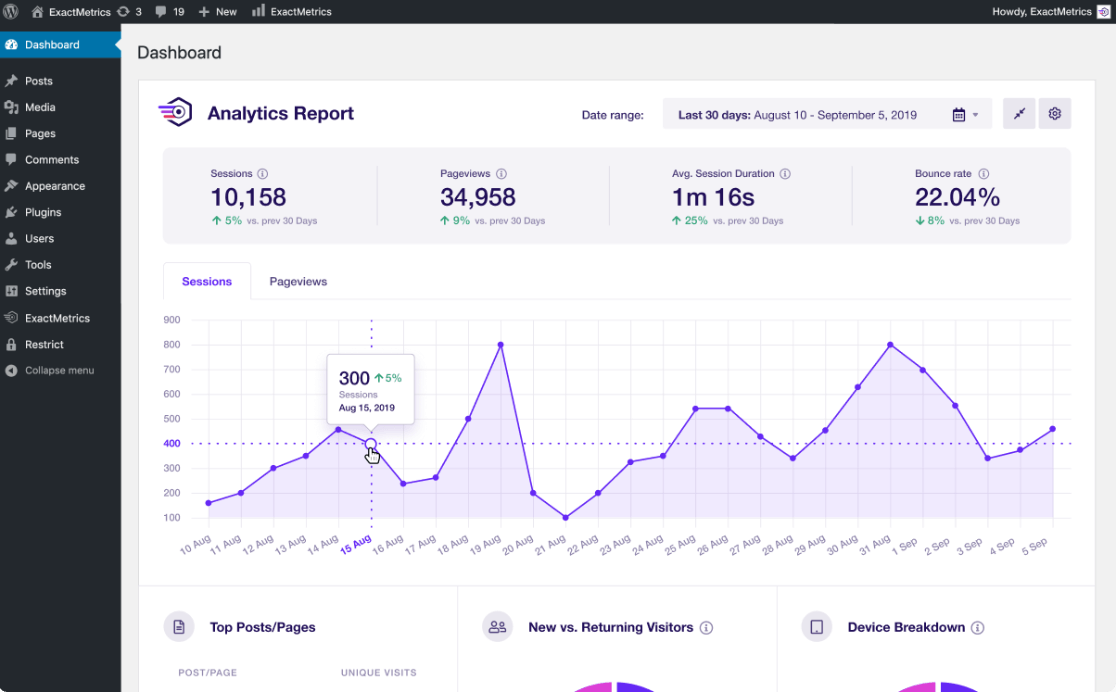
Our most popular features include:
- Easy ecommerce setup and tracking
- Top outbound and top affiliate link clicks
- GDPR compliance
- Scroll tracking
- Form tracking
- Popular posts or products widget
- Enhanced link attribution and anchor link click tracking
- And lots more!
With ExactMetrics, all your most important metrics are right there in your WordPress dashboard.
Here’s how to track anchor link clicks on your single-page website with ExactMetrics!
Step 1: Install ExactMetrics
Already have the plugin? Skip to step 3.
To start, head to the Pricing page and get started with ExactMetrics at the Plus level. Once you complete checkout, download the plugin.
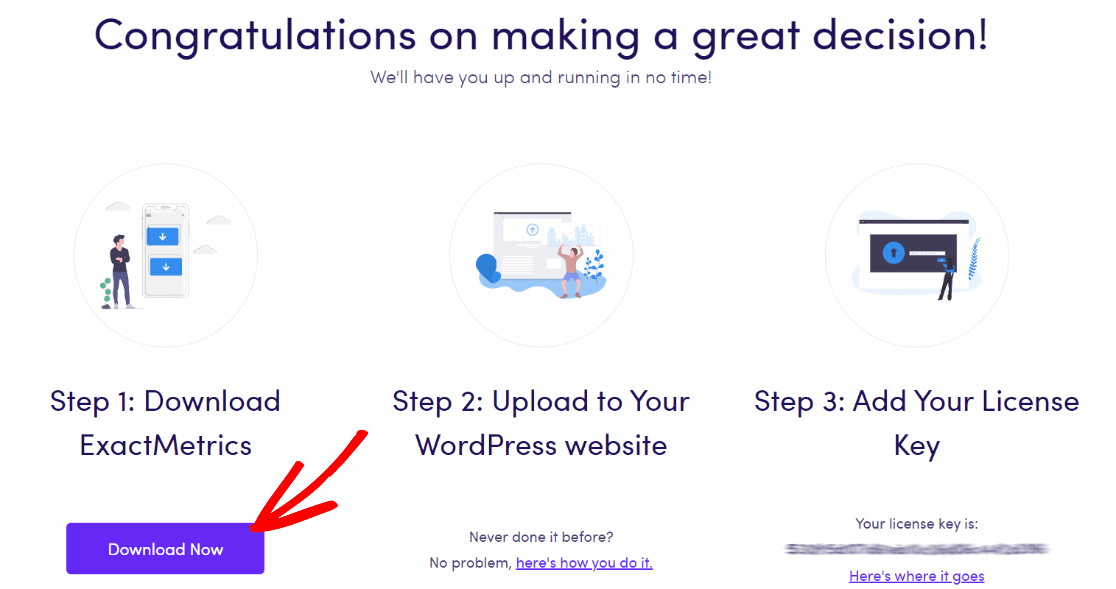
Next, upload it to your website.
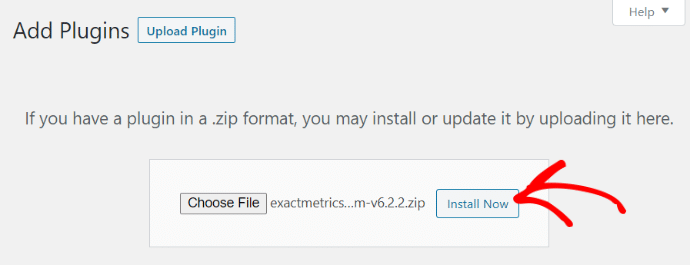
Step 2: Add Your License Key and Connect to Google Analytics
Now that you have ExactMetrics installed, you can add your license key and connect your Google Analytics account. To get set up, click on ExactMetrics under your WordPress Dashboard and click the big green “Launch the wizard!” button.
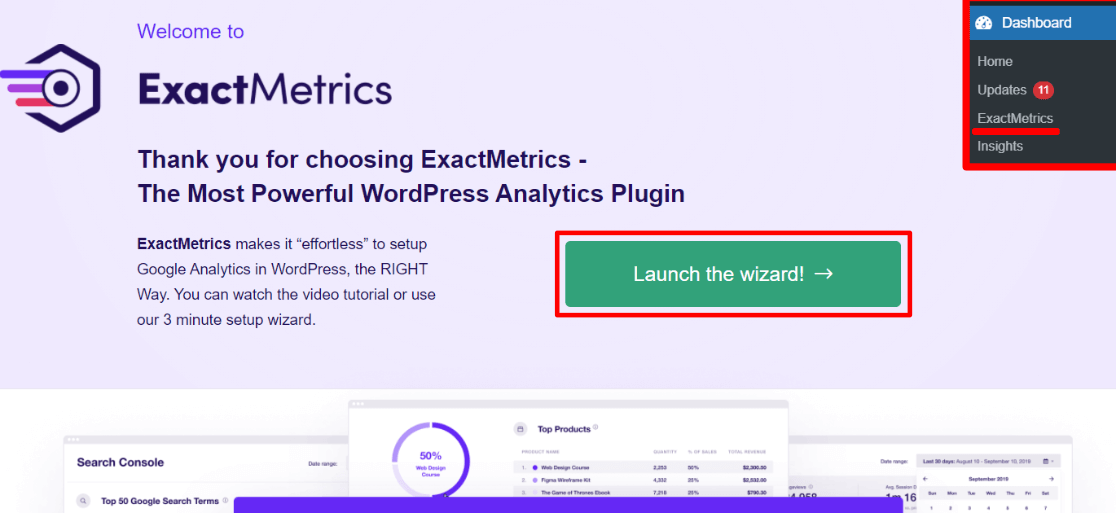
Once you’re in the wizard, you’ll get to this page where you can add your license key and connect with Google Analytics:
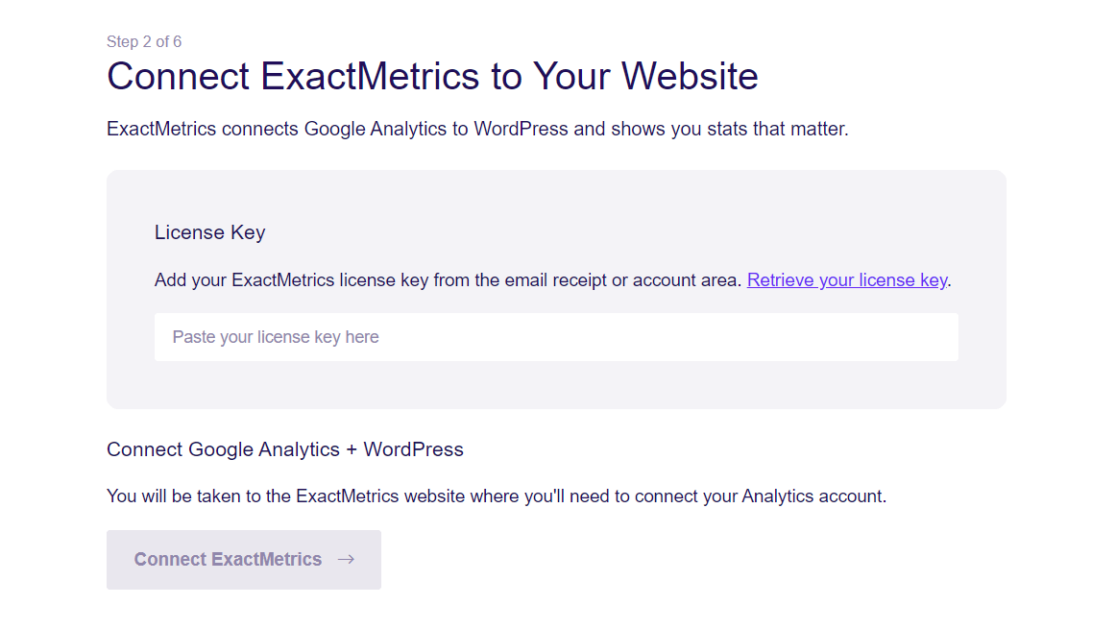
For more details on this step, check out our guide on how to properly add Google Analytics to your WordPress website.
Step 3: Enable Enhanced Link Attribution
Now, you need to enable Enhanced Link Attribution and Anchor Tracking in your ExactMetrics settings.
In your WordPress dashboard, go to ExactMetrics » Settings » Engagement. Then scroll down to the Link Attribution section:
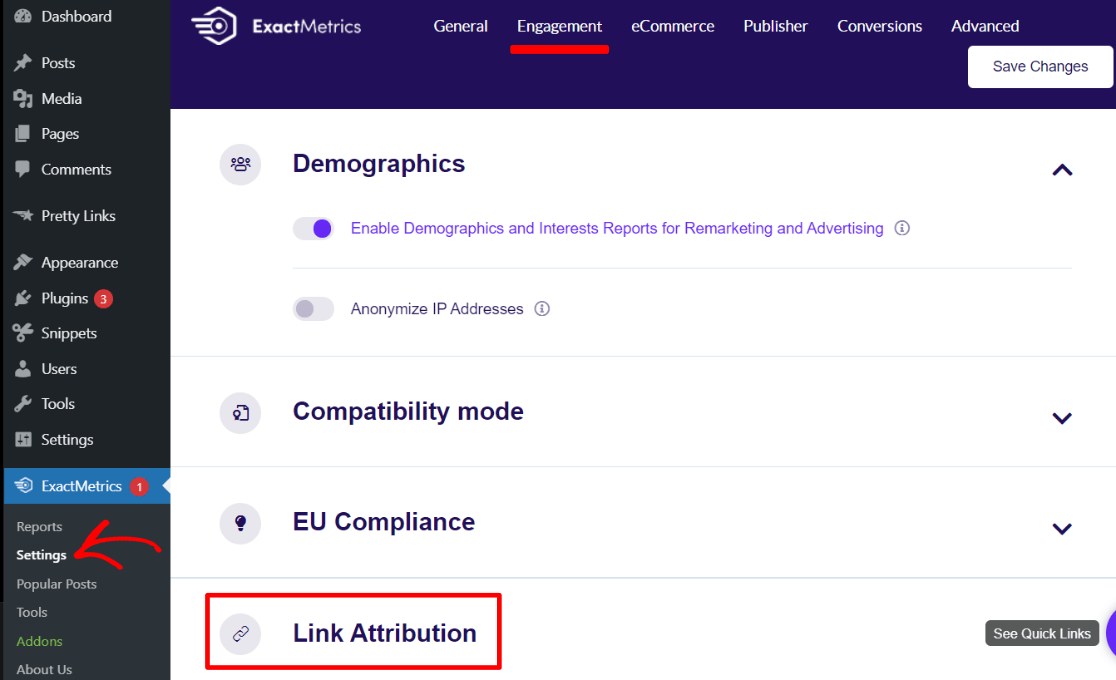
Click the switch for Enable Enhanced Link Attribution and check Enable Anchor Tracking.
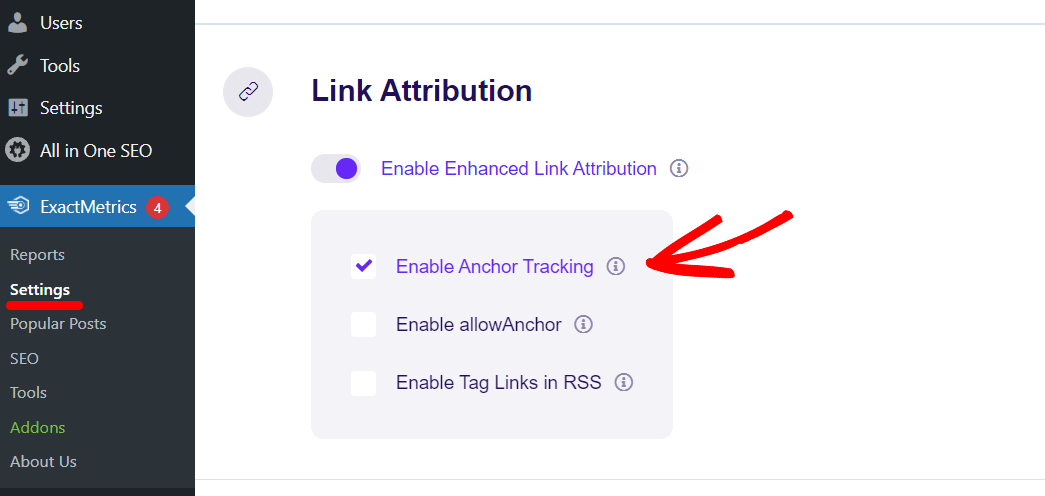
Once you’re done, don’t forget to select the Save Changes button.
That’s it! You now have anchor link tracking set up and ready to view in Google Analytics.
See Pageviews for Your One-Page Site in GA4
Now that you have anchor link tracking set up, you can see those clicks in your Google Analytics account.
To view the data, navigate to Reports » Engagement » Pages and screens. Scroll down to the table and make sure the dropdown menu is set to Page path and screen class. Here, you can see all the anchor links on your website as if they were separate pages.

Use the second column to easily see pageviews for each content section of your one-page site. Plus, find other important page metrics like conversions, average engagement time, and more.
That’s all there is to it! Now you can track your single-page website the same way you would for any site. See how much traffic your “pages” are getting, which anchor link is leading to the most revenue, and more.
Note: If you’re using anchor link tracking but have other pages on your site, you can type a hashtag “#” in the search bar to see only the anchor links.
Are One-Page Websites a Good Idea?
One-page websites are unique and focused. They can be a great option for some companies, organizations, or brands. If you don’t need a bunch of pages, why make them?
The main drawback to a one-page website is tracking with Google Analytics, but going over the steps above to set up anchor tracking will fix that. Beyond anchor tag tracking, here are a few more Analytics tips for single-page WordPress sites:
- Scroll tracking: Especially with a one-page website, you want to know how far down your users are scrolling. A scroll depth report comes with ExactMetrics Plus with much more accurate tracking than the default scroll tracking in GA4.
- Form tracking: Set up form conversion tracking to track your form views and conversion rate. This is automatic with ExactMetrics Pro!
- Site speed: Is your website fast enough to live up to Google’s Core Web Vitals expectations? Get a site speed report automatically with ExactMetrics Plus.
- And more! Check out our full list of features and take a look at the awesome reports you’ll get with ExactMetrics.
If you haven’t set up your website yet, check out 25 Best One Page WordPress Themes via WPBeginner and head to our tutorial on How to Build a WordPress Website in 7 Easy Steps.
That’s it!
We hope this guide helped you set up pageview tracking on your single-page site.
If you liked this guide, we think you might also like How to Set Up a Stats Dashboard in WordPress (the Easy Way).
And don’t forget to follow us on Twitter and Facebook for more Google Analytics tutorials.

